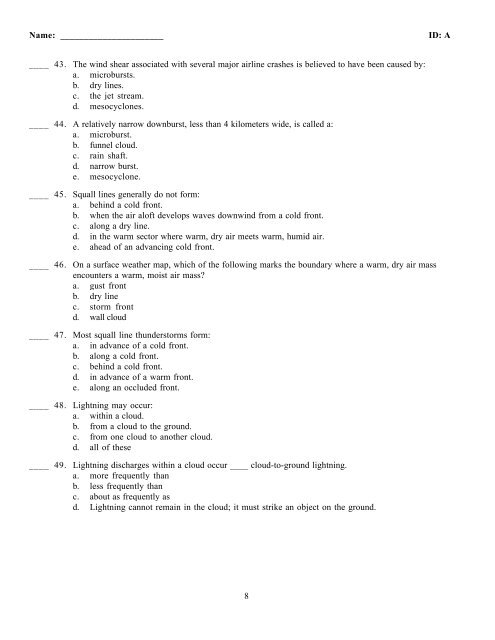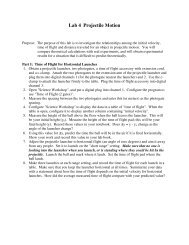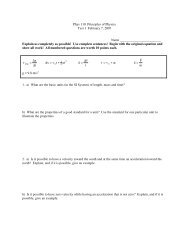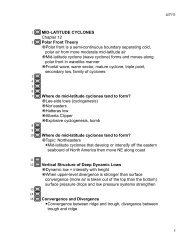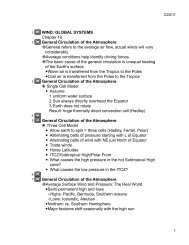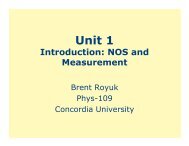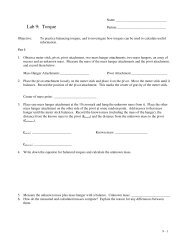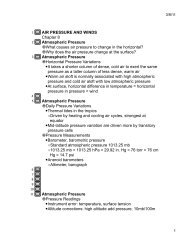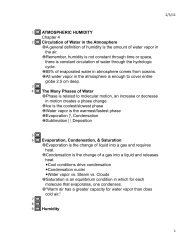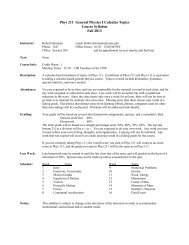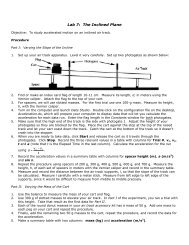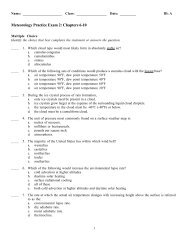Meteorology Practice Exam 3: Chapters 11-14
Meteorology Practice Exam 3: Chapters 11-14
Meteorology Practice Exam 3: Chapters 11-14
You also want an ePaper? Increase the reach of your titles
YUMPU automatically turns print PDFs into web optimized ePapers that Google loves.
Name: ______________________ ID: A<br />
____ 43. The wind shear associated with several major airline crashes is believed to have been caused by:<br />
a. microbursts.<br />
b. dry lines.<br />
c. the jet stream.<br />
d. mesocyclones.<br />
____ 44. A relatively narrow downburst, less than 4 kilometers wide, is called a:<br />
a. microburst.<br />
b. funnel cloud.<br />
c. rain shaft.<br />
d. narrow burst.<br />
e. mesocyclone.<br />
____ 45. Squall lines generally do not form:<br />
a. behind a cold front.<br />
b. when the air aloft develops waves downwind from a cold front.<br />
c. along a dry line.<br />
d. in the warm sector where warm, dry air meets warm, humid air.<br />
e. ahead of an advancing cold front.<br />
____ 46. On a surface weather map, which of the following marks the boundary where a warm, dry air mass<br />
encounters a warm, moist air mass?<br />
a. gust front<br />
b. dry line<br />
c. storm front<br />
d. wall cloud<br />
____ 47. Most squall line thunderstorms form:<br />
a. in advance of a cold front.<br />
b. along a cold front.<br />
c. behind a cold front.<br />
d. in advance of a warm front.<br />
e. along an occluded front.<br />
____ 48. Lightning may occur:<br />
a. within a cloud.<br />
b. from a cloud to the ground.<br />
c. from one cloud to another cloud.<br />
d. all of these<br />
____ 49. Lightning discharges within a cloud occur ____ cloud-to-ground lightning.<br />
a. more frequently than<br />
b. less frequently than<br />
c. about as frequently as<br />
d. Lightning cannot remain in the cloud; it must strike an object on the ground.<br />
8


